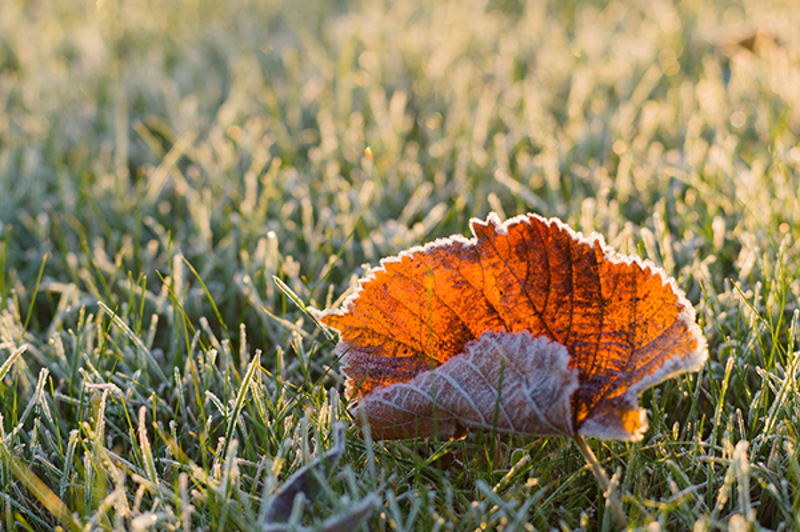Mowing for winter
Setting the mower height in winter is a bit of a balancing act. In general, setting the mower higher will really help – the longer the leaf, the more photosynthesis can occur during the reduced daylight hours...and the healthier the lawn will stay.
However, in extended periods of rain and humid conditions, the extra grass height can encourage lawn diseases to take hold. In this situation it's better to mow a little lower. And definitely don't mow while the grass is wet, see the explanation below!
When the temperature drops, you don't need to mow regularly like you do in summer. So, while the lawnmower has some downtime, it's a great time to get it serviced. A lot of people don't get around to sharpening the blades on the mower. Dull blades tear and rip the grass – if you look at the ends of mown grass leaves, you’ll notice little strings of fibre on the cut end where it's frayed and damaged. That’s a signal you’re overdue for sharpening your blades! Sharp mower blades make a cleaner cut and cause less stress to the grass; helping it recover faster.
On top of that, never mow a wet lawn, it tears and damages the grass just like a dull mower blade does.
How to handle frost
Keep off the grass! Frost freezes grass blades on your lawn; walking or driving over it makes them snap and crackle under your feet or car. This shows up first as black marks and later brown, dead grass. If the frost is light, when temperatures start to warm up in the day, a light spray of water can lift the frost quicker and help the grass deal with the shock/stress of the temperature. But if the frost is heavy, don't spray water on it, it can make it worse!
Removing weeds
During winter, weeds take advantage of the lawn’s weakened state to fill every possible gap. Winter weeds germinate at lower soil temperatures, often popping up around April/Easter. Most broad-leafed weeds are easily controlled with a selective herbicide. This is the type of weedkiller that removes weedy invaders without harming the lawn grass.
Typical examples of broad-leafed weeds are clover, dandelions, capeweed, clover and thistles. Traditional selective herbicides like Yates Turfix Lawn Weed Spray work effectively on these weeds, and play nicely with common NZ lawn types like fescue, browntop, and ryegrass.
A simple way to remove weeds and fertilise the lawn at the same time is by using Yates Weed n Feed Double Action Hose On. The Yates Weed’n’Feed range includes hose-on and dry formulations, Yates Weed n Feed Double Action Granular. Check directions to make sure that the product is right for your grass. If you're not sure what sort of grass you have, have a look at our grass types page, for help identifying it.
Let your lawn breathe
If you have deciduous trees that drop leaves on your lawn in autumn, don't leave them sitting on the lawn into the winter. A layer of leaves blocks sunlight to the grass underneath, and prevents oxygen, water, and nutrients from getting where they need to go. And that means the lawn is more susceptible to fungal diseases and pests. Leaves make great compost, so rake them up early and add them to your compost bin.



















Share
Share this article on social media